Broken ISC and leaked intake manifolds are the most common causes of unstable RPM. Also, check if the air filter is clogged, as a dirt valve can mess up the rotation system when AC is On. Finally, a faulty AC compressor or lack of gas also leads to fluctuating RPM.
A little RPM fluctuation with turned-on AC is normal. A car does this to balance the power-consuming accessory with the central system.
However, RPM swings with vibration and bizarre sounds indicate faulty automotive parts. A closer look into the ISC, gas valve, or AC will reveal the main problem.
Let’s explore each issue with the probable fix in detail.
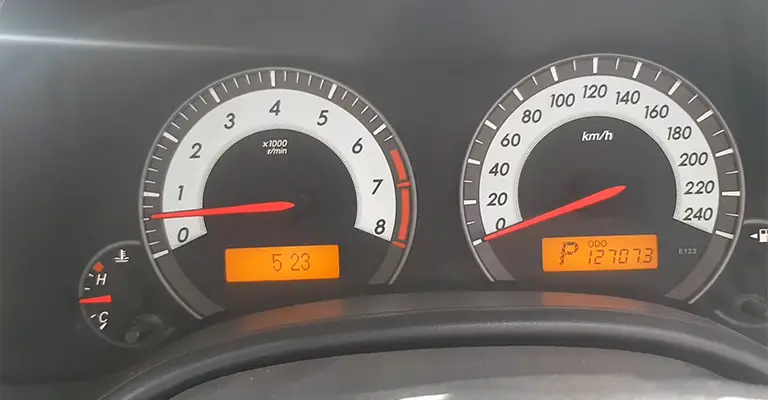
5 Reasons Why RPM Goes Crazy When AC Is On
RPM fluctuation due to AC seems to be a common issue for car owners. Experts and mechanics address it as a normal event. However, the vibration and noise that comes along are really annoying.
Therefore, going after the solution is the only way out of this miserable situation. But to fix the unstable RPM, you should first determine the root of it.
I have come up with 5 reasons that can mess up your RPM when the AC is turned on. Allow me to point out these causes one by one.
1. Something Is Fishy with the ISC Component
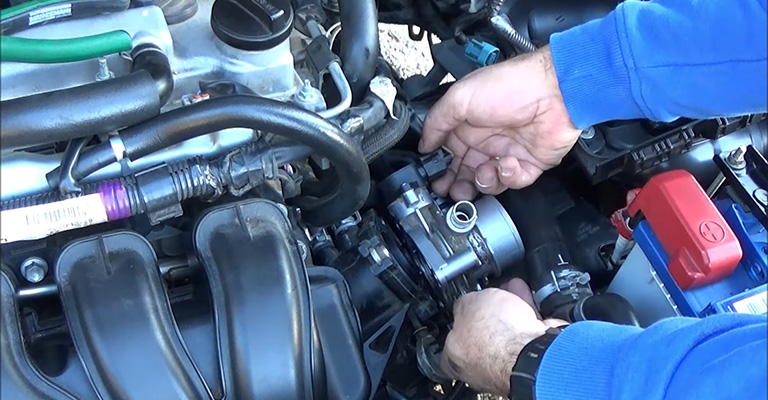
The engine can run rough and stall due to turning on any other power-consuming accessory in an idle car. More or less, each vehicle comes with an ISC system to keep this phenomenon in control.
I am sure you are familiar with the ISC or idle speed control system. Our car switches to the idle speed control mode to prevent engine stalling.
Idle speed control really does an amazing job of keeping the engine stable. In general, the ISC maintains a 750 – 800 RPM in a stationary car engine. But as you turn the AC on, the workload on the engine will spike up. Therefore, the ISC will set up an optimum RPM to keep everything under control.
In short, with the ISC, an idle engine can maintain as low RPM as possible, even when the AC is on. But this balance will go off the cliff if we have damaged idle speed control.
Of course, the ISC will try to minimize the RPM. But the faulty system needs to balance the engine rotation with the power-consuming accessories. Hence, you face an unstable RPM when the AC is turned on.
Quick Fix
Fortunately, a damaged ISC is not a big deal and causes no permanent damage to the engine. You can have your mechanic take a look into the idle speed control system to find the fault. In most cases, it is a dirty needle behind all these.
Cleaning the ISC component will restore the issue. However, if the damage is severe, you may have to install a new system.
2. Gas Valve Looks Like a Garbage Can
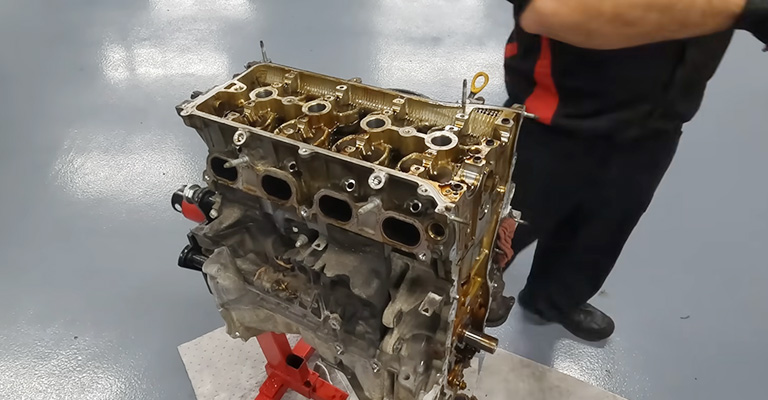
Of course, the ISC is not always responsible for the fluctuating RPM. Sometimes, it might be the dirty gas valve responsible for the unstable rotational rate.
See, the engine requires a steady airflow even in an idle position. But now, the combustion chamber can work with less air than the bulk. Hence, the gas valve opens a narrow channel to pass the exact amount of air into the system.
Moreover, the air requirement spikes up when the AC is on. So, the valve sucks more air to stabilize the idle engine.
However, dirty gas valves can mess up this process. A clogged valve cannot let in enough air, causing fluctuation in the RPM.
Quick Fix
A gas valve stops working efficiently when its air filter gets clogged with dirt. Therefore, regular cleaning is mandatory. Moreover, you must replace the existing filter with a new one after a certain period.
Of course, you can clean the air filter on your own. Just get a blower to remove the dirt first. For the residuals, you’ll need a carburetor cleaner.
As per the professionals, gas valve filter cleaning is necessary after driving ten thousand kilometers. But yes, if you live in a dusty area, you may have to clean it more frequently.
3. Your Intake Channel Is Broken
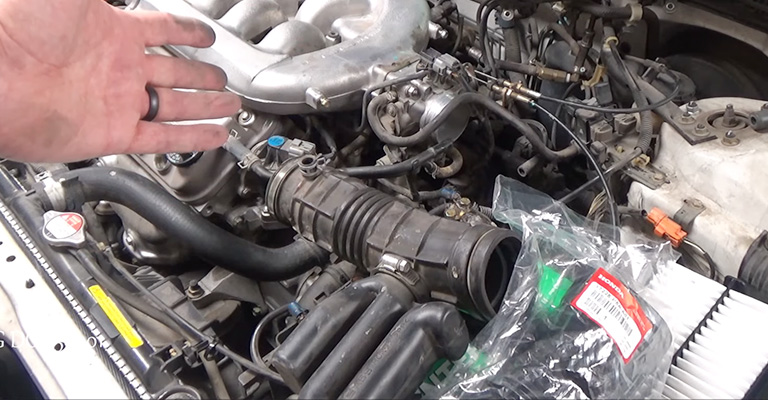
Air is mandatory to keep the engine running, even at stationary. But who decides the air requirements of your combustion chamber?
Well, the engineers have developed an airflow meter to calculate the air demand and send data to the engine control unit. The ECU then utilizes the information and determines the fuel requirement for optimum engine performance.
When you turn on the AC, the air demand of the combustion chamber increases, so the airflow meter will send new data to the ECU to adjust the fuel spray accordingly.
The mass flow sensor is right between the gas valve and the air filter. However, if this intake channel gets a leak or experiences damage, it will change the sensor reading.
Unfortunately, more air will now enter in because of the crack. Consequently, the ECU will try regulating the fuel spray as per this faulty data. Therefore, your engine RPM will be unstable and inaccurate.
Quick Fix
Of course, you must look for the intake channel’s crack. Replacing or repairing the broken part will restore everything back to normal.
Sometimes a loose connection in the intake manifolds leads to RPM fluctuation. Tightening the connections can resolve the issue within no time.
4. Refilling The Refrigerant Gas
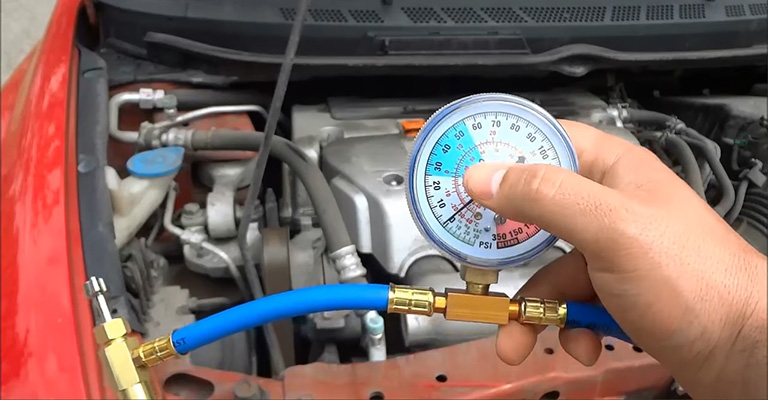
Though a rare case, there is a possibility that the refrigerant gas in the AC is less than required. As a result, the engine control module or ECU cannot manage the load efficiently. Consequently, the control module cuts off and on the compressor, causing RPM fluctuation.
Quick Fix
Refilling the system with refrigerant will resolve the issue. Generally, your AC refrigerant gas needs no recharging for 3 years or even more. Moreover, refill the gas following the required quantity. Overflowing the system will lead you to the same unstable RPM issue again.
5. Why Not Look into the AC?
Like our home air conditioning, the car AC utilizes freon to cool the airflow. The compressor converts the physical state of the freon to regulate the air temperature. So, it definitely requires energy and fuel to run this function.
Hence, turning on the AC adds up more workload on the engine. Usually, the longer freon circulations lead to more energy consumption, burdening the combustion chamber with more load. Obviously, the car system adjusts its RPM to prevent stalling while handling the extra task.
Now, what happens if the freon circulation is defective? Of course, the load calculation will not be accurate, which will consequently cause an unstable RPM. Generally, a clogged AC condenser or broken compressor is responsible for the disrupted freon circulation.
Quick Fix
You need to call your mechanic to fix the AC. He will run an AC manifold pressure test to observe the AC pressure. Replacing the faulty parts or repairing them will end your unstable RPM issue.
Frequently Asked Questions
What causes the rpm to go up and down?
The possible reasons for unstable RPM are faulty spark plugs, broken IACs, vacuum leaks, and transmission issues.
What does it mean when your rpm is jumping?
Honestly, a little swing in the RPM is nothing to worry about. It occurs due to the drag on the engine because of the power-consuming accessories of the vehicles. However, the jumping RPM, in other cases, indicates an overworking engine or a faulty car system.
Conclusion
So, why does my RPM go up and down while AC is on? The most common answers are broken ISC, damaged intake channel, and dirty air filter. Then again, sometimes the problem lies in the air conditioning system.
Leave a Reply